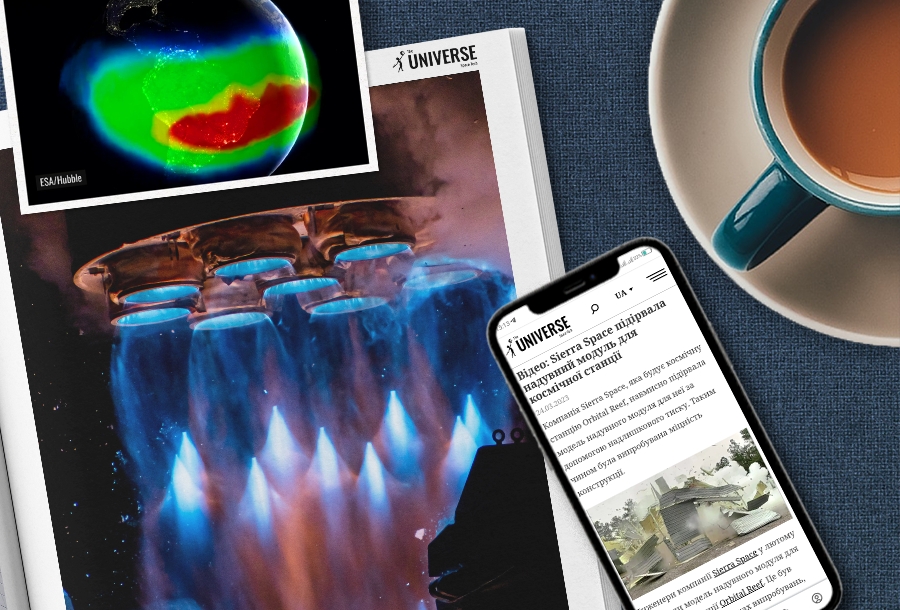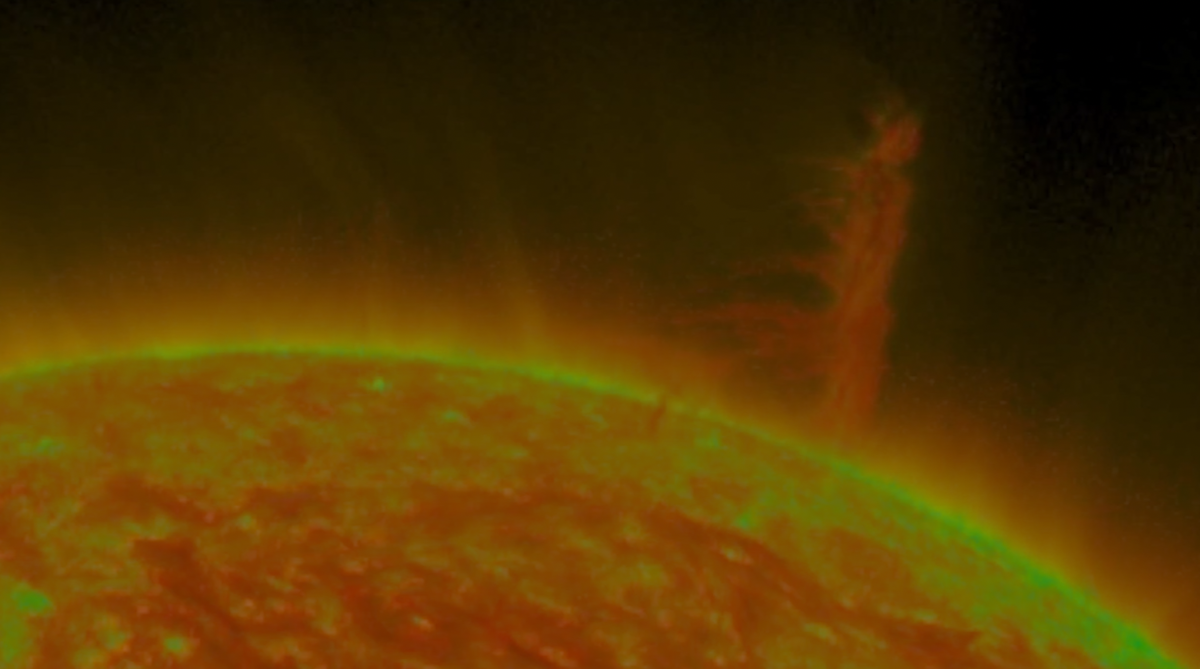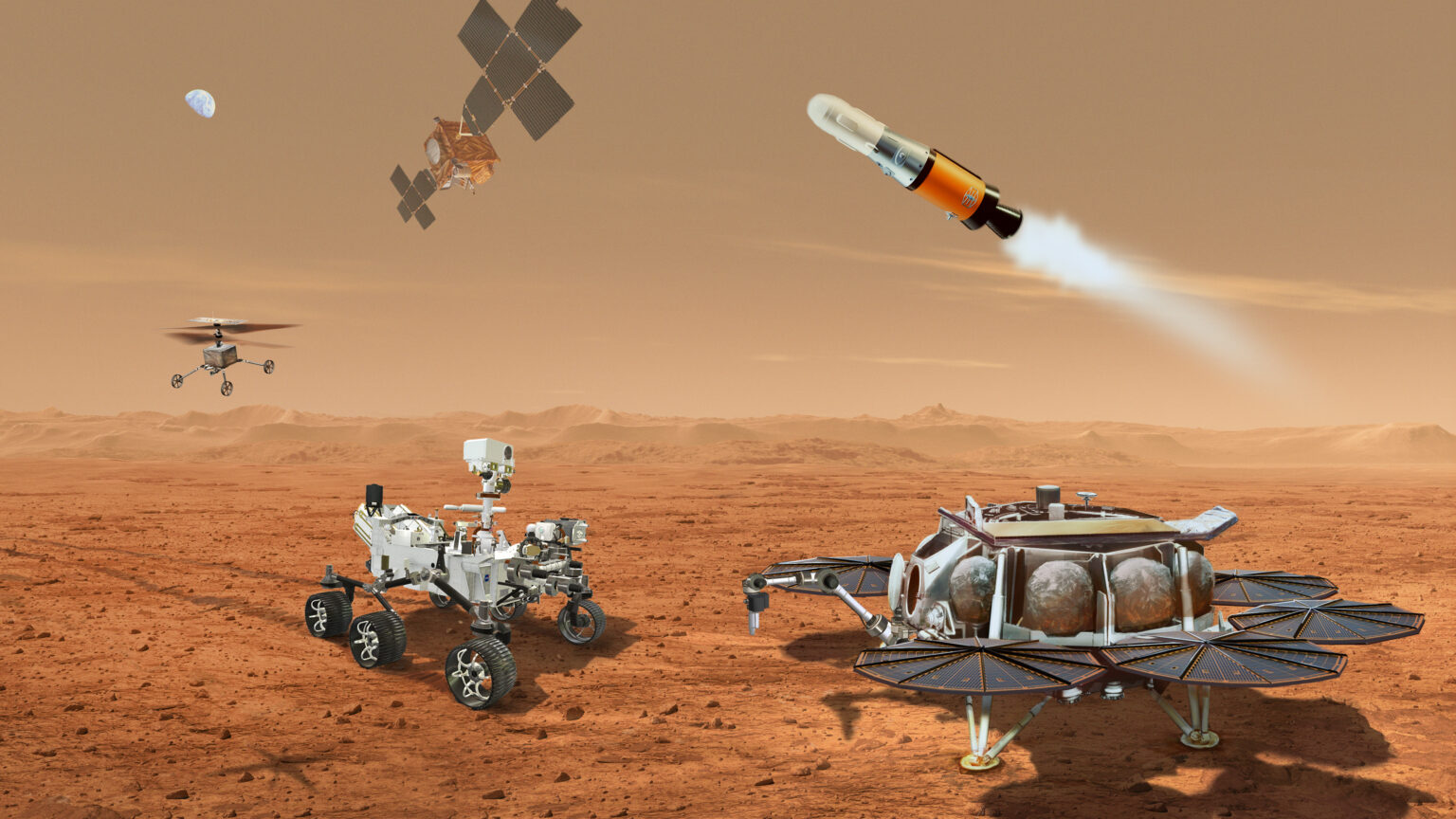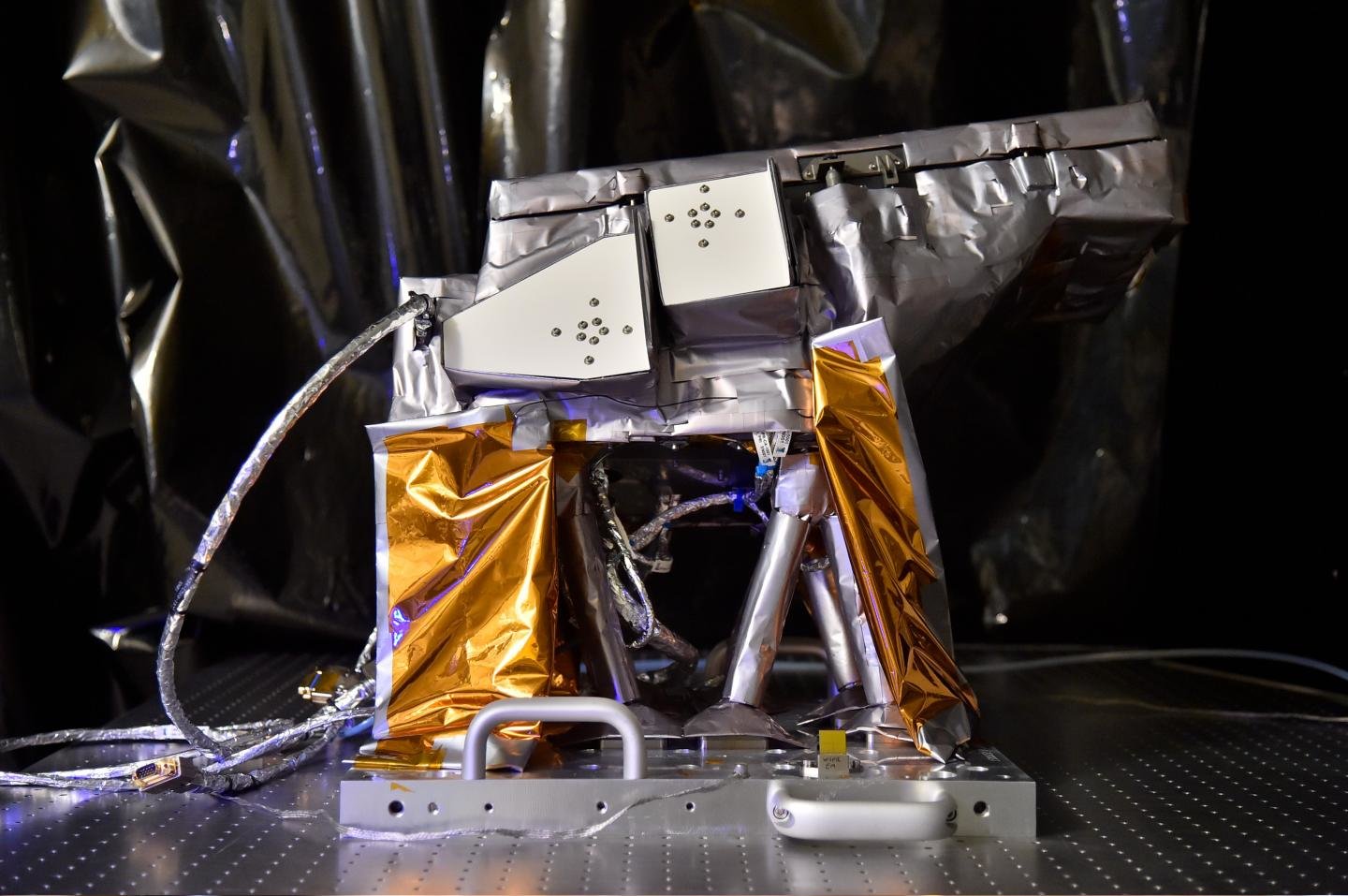Selection of the most interesting space news for the week: NASA captured a giant tornado on the Sun; the VERITAS Venusian mission was under threat, and we are talking about the study of the Sun.
Read more about each news with a hyperlink.

“Nothing in life is to be feared, it is only to be understood. Now is the time to understand more, so that we may fear less.”
― Marie Curie
First 3D-printed rocket fails to reach orbit
On March 22, Relativity Space carried out the first launch of the Terran 1 rocket, 85% of the components of which were printed using a 3D printer. The carrier successfully took off, but failed to reach orbit due to the failure of the second stage.
Initially, the Terran 1 flight took place according to plan. The rocket successfully broke away from the launch pad and overcame the Max-Q section — the point at which it is subjected to maximum aerodynamic drag during flight and experiences the greatest loads. At the 165th second of the flight, Terran 1 successfully dropped the first stage. The failure occurred at the work site of the second stage. Judging by the footage from the onboard camera, its engine worked intermittently, and then completely off. As a result, the rocket failed to reach the first space speed and fell into the Atlantic Ocean.
Virgin Orbit is on the verge of bankruptcy
The future of Virgin Orbit hangs in the balance. In order to escape from bankruptcy, the company is actively looking for financial injections. The California-based company has been trying to achieve success in the field of satellite launches for the past year, but suffered a serious failure in January when an attempt to launch over the UK ended in failure. Recently, a potential buyer suddenly refused a USD 200 million deal. Now other companies are negotiating with the company. But if an investor is not found quickly, bankruptcy may occur as early as this week.
NASA notices a rapidly growing “dent” in the Earth’s magnetic field
NASA is actively monitoring the amazing South Atlantic Anomaly that stretches between South America and Southwest Africa.
NASA compares the South Atlantic anomaly with a “dent” in the Earth’s magnetic field or a kind of “pothole in space”. The phenomenon directly affects spacecraft that orbit the planet in low Earth orbit and pass through it. The fact is that satellites and the International Space Station are particularly vulnerable to weakened magnetic field strength in this area. Because of this, high-energy protons originating from the Sun hit the technological systems on board the satellites and can disable them.
NASA’s Venus mission is under threat
The recently submitted draft of the new NASA budget does not actually involve the allocation of funds for the development of the VERITAS mission. It will receive only 1.5 million next year, while earlier the agency expected to spend USD 56.7 million on its development. According to experts, the lack of funding may lead to the cancellation of the project.
The VERITAS mission (Venus Emissivity, Radio Science, InSAR, Topography, and Spectroscopy) was officially selected for implementation as part of the Discovery program selection in 2021. It is being developed by NASA’s Jet Propulsion Laboratory (JPL). Within its framework, an orbiter is supposed to be sent to Venus, which will be engaged in its mapping and study of tectonic processes. It will make a detailed three-dimensional map of the Venusian surface. It would help to answer the question of what the nearest planet was in the distant past and whether it could have an ocean.
Sierra Space blows up an inflatable module for the space station
Sierra Space, which is building the Orbital Reef space station, deliberately blew up a model of an inflatable module for it using overpressure. Thus, they tested the strength of the structure. At the same time, the module is not at all rubber, it is woven from separate flexible fibers that are tightly fitted to each other. In the next tests, which will begin this year, engineers will use a full-size module with metal parts.
All these actions have as their ultimate goal the certification of modules in order to build the Orbital Reef space station from them. In total, in 2021, NASA allocated USD 415 million to three consortia to develop future commercial space stations. The Orbital Reef team received USD 130 million, the Nanoracks LLC team received USD 160 million, and the Northrop Grumman team received USD 125.6 million. The certification of all these structures is ongoing right now.
Photo of the week

Over the past week, a giant thread of superheated plasma has been rising above the Sun, which eventually fell on its surface, forming a giant tornado 14 times the size of the Earth. In addition, six spots and two coronal holes can now be observed on our luminaire. A particularly strong solar wind blows through them. And all this happens on the days of the vernal equinox, when the axis of the magnetic field of our planet is perpendicular to the direction of the solar wind and the danger of magnetic storms increases dramatically.
Interesting figure — USD 949.3 million

NASA has requested 949.3 million dollars for the implementation of the MSR (Mars Sample Return) mission in 2024. This amount significantly exceeds last year’s assessment of the needs of the organization. A further increase in mission costs could jeopardize the implementation of other NASA projects. So, only this year 653.2 million dollars will be allocated for it. More recently, NASA estimated the needs of the mission for 2024 at USD 800 million. However, experts underestimated the costs required to implement such an ambitious project.
The MSR mission is being developed by NASA in collaboration with ESA. Its purpose is to deliver soil samples collected by the Perseverance rover to Earth.
Something to read on the weekend

This week we continue to talk about the study of the Sun. To date, humanity has sent two space probes to study the solar corona: Parker Solar Probe (PSP, NASA) and Solar Orbiter (SolO, ESA). Read more about how they work and how scientists use them to explore our nearest star in the article “The sun in the focus of spacecraft“.
Read also: Starlink has a new competitor, and NASA will replace Russian spacecraft for a billion: News Digest
Follow us on Twitter to get the most interesting space news in time
https://twitter.com/ust_magazine

